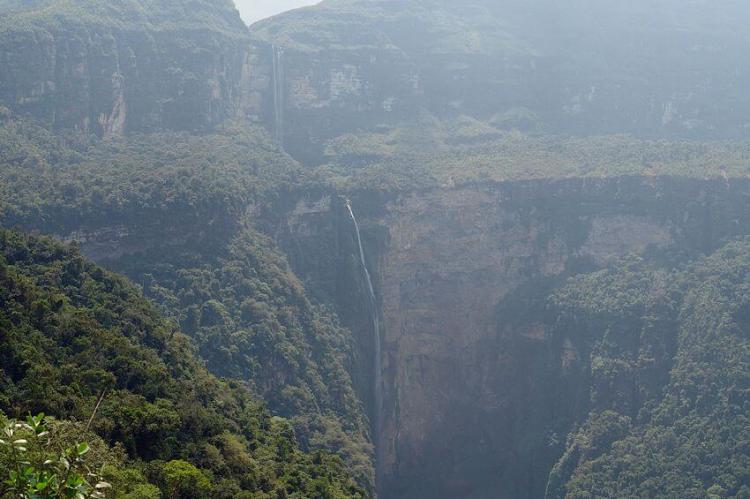Gocta Waterfall: Catarata de Gocta (Peru)
Nestled within the lush landscapes of northern Peru, the Gocta Falls, also known as Catarata de Gocta, stands as one of the world's natural wonders. This spectacular waterfall, hidden for centuries in the cloud forest of the Amazonas region, has become a symbol of Peru's rich biodiversity.
Gocta Waterfall: Catarata de Gocta
Nestled within the lush landscapes of northern Peru, the Gocta Waterfall (Catarata de Gocta), also known as the Gocta Cataracts or Gocta Falls, stands as one of the world's most captivating natural wonders. This spectacular waterfall, hidden for centuries in the cloud forest of the Amazonas region, has become a symbol of Peru's rich biodiversity and natural beauty.
The Gocta Waterfall is situated in the province of Bongará in northern Peru. It is tucked away in the cloud forest of the Peruvian Andes, an area characterized by its dense vegetation, diverse wildlife, and challenging terrain. Despite its grandeur, the waterfall remained largely unknown to the outside world until its "discovery" in 2006, when a German economist, Stefan Ziemendorff, publicized its existence.
Gocta is a two-tiered waterfall, with an upper cascade measuring approximately 540 meters (1,772 feet) and a lower cascade that descends a further 230 meters (754 feet). With a combined height of about 771 meters (2,530 feet), it ranks among the tallest waterfalls globally, mesmerizing all who witness its breathtaking descent into the lush greenery below.
The region around the falls has historical and cultural importance, with indigenous communities such as the Chachapoyas having inhabited the area for centuries. The locals revered the falls as a sacred site, and their rediscovery prompted efforts to balance tourism with the preservation of the cultural and natural heritage of the region.
Flora and Fauna
The falls are surrounded by the diverse flora of the cloud forest, creating a vivid tapestry of tropical vegetation. The mist rising from the plummeting water contributes to the enchanting atmosphere. The cloud forest surrounding the Gocta Waterfall is a biodiversity hotspot, home to a myriad of plant and animal species.
The lush vegetation includes orchids, bromeliads, and ferns, while the diverse birdlife includes toucans, hummingbirds, and parrots. Mammals like howler monkeys, spectacled bears, and the elusive Andean cock-of-the-rock, add to the allure of the falls as a haven for nature enthusiasts.
Ecotourism and Conservation
The Gocta Cataracts are an integral part of the Peruvian Andes ecosystem, providing habitat for various plant and animal species. Recognizing the importance of preserving this natural wonder, the Peruvian government has designated the area as a protected zone.
Since its discovery, the Gocta Cataracts have become a focal point for ecotourism in Peru. Trails lead adventurous visitors through the cloud forest, providing stunning views of the falls. The journey to the falls often includes immersive experiences with local communities, adding a cultural dimension to the adventure. While access to the falls was once challenging, efforts have been made to improve infrastructure, making it more accessible for tourists.
The increased tourism to the waterfall has brought both benefits and challenges. While it has contributed to the local economy and raised awareness about the region's ecological importance, it has also raised concerns about the potential impact on the delicate ecosystem. Sustainable tourism practices and community involvement in conservation initiatives are crucial to ensuring the long-term protection of the Gocta Falls.
